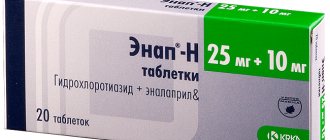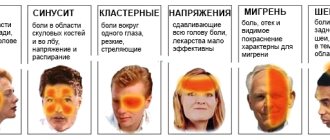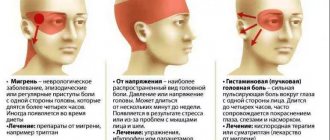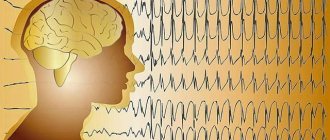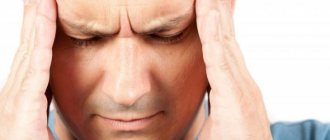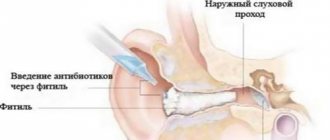Headache is one of the most common symptoms with which patients consult a neurologist. The characteristics of headaches are completely different: unilateral and bilateral, clearly localized and widespread (diffuse), radiating from one area to another. Headache can be dull, sharp, aching, stabbing, pressing, bursting, etc. It can last from a few seconds to several days or be constant, occur suddenly or increase gradually.
A headache is not always a consequence of a serious somatic illness, but sometimes it requires the use of emergency measures. Finding out the characteristics of a patient’s headache makes it much easier to identify the cause of this symptom and allows the doctor to take the necessary measures.
The causes of headaches are divided into primary and secondary.
Primary headaches
These are headaches associated with hyperreactivity of pain sensory receptors in the head; they are not symptoms of any disease. In the occurrence of headaches of this type, the main role is played by the mediator (chemical) activity of brain cells, blood vessels of the head, muscles of the head and neck. Some people have a genetic predisposition to headaches.
Primary headaches include:
- migraine;
- tension headache;
- chronic migraine;
- cluster headache;
- chronic daily headache;
- chronic paroxysmal hemicrania;
- hemicrania continua;
- syndrome of short-lasting unilateral neuralgiform attacks with conjunctival injection and tearing SUNCT (short-lasting unilateral neuralgiform attacks with conjunctival injection and tearing);
- syndrome of short-lasting unilateral neuralgiform headache attacks with cranial autonomic symptoms SUNA (short-lasting unilateral neuralgiform headache attacks with cranial autonomic symptoms);
- new daily persistent headache;
- tension headache;
- primary headache associated with cough;
- primary headache associated with sexual activity;
- primary stabbing headache;
- hypnic headache;
- primary thunderclap headache.
The result of self-medication
There are a huge number of causes of headaches. However, cases are becoming more and more common when the cause of chronic pain is self-medication. Headache can be caused by vasodilators (nitrates, chimes, calcium antagonists), non-steroidal anti-inflammatory drugs (nurofen, diclofenac) and antihistamines (tavegil, suprastin, etc.). For example, abuse of analgesics can lead to the development of drug-related, so-called chronic abuse headaches. The habit of taking analgesics several times a day may indicate a negative result from taking painkillers.
Overuse headache, caused by the reverse effect of analgesics, is a disease of modern society, where there are a huge number of over-the-counter drugs widely advertised in the media. The availability of self-medication with overdose has led to drug-induced pain becoming an international problem. According to researchers in the USA, Italy, Germany, and Switzerland, its frequency is 20% among other types of headaches.
Secondary headaches
Headache occurs as a symptom against the background of an underlying disease, often somatic or associated with a pathology of the nervous system, but having a certain “substrate” - the cause of pain:
You should consult a doctor immediately if:
- for the first time a severe attack of unbearable headache arose;
- headache is accompanied by fever, chills, tension and pain in the neck muscles, disturbances (losses) of consciousness, convulsions, double vision or other visual problems, weakness, numbness, disturbance (difficulty) of speech;
- headache occurred after a head injury (blow to the head) and gets worse;
- habitual headache, began to be provoked by coughing, straining, physical or emotional stress, or appeared suddenly, without any reason;
- headache appeared for the first time after the age of 50 years.
Forecast
Important! Neuropathic pain can negatively impact your life if you don't take steps to treat it and prevent symptoms from getting worse.
Over time, this can lead to serious disabilities and complications including depression, sleep problems, anxiety and more.
Fortunately, researchers are learning more about why this condition develops and what can be done to treat it effectively. This leads to better treatment options.
Headache - when to consult a neurologist
You should visit a doctor if:
- headache bothers you more than 2 times a week, and you are forced to take medications each time to relieve pain;
- the habitual headache has changed its character, frequency of occurrence, and duration of attacks.
Consultation with a neurologist and diagnostics includes:
- A survey regarding the characteristics of the headache (dull/sharp, throbbing/pressing, constant or paroxysmal) and the characteristics of its occurrence.
- Determining the severity of the headache: does the headache interfere with work, sleep, and leading a normal lifestyle.
- Localization of pain: the area where the greatest pain is felt (forehead, temples, back of the head, diffusely the whole head).
- General and neurological examination.
In certain cases, additional studies may be required - laboratory tests, neuroimaging methods (CT or MRI of the brain, if necessary with intravenous administration of a contrast agent) or other studies. If hemorrhage or infectious causes of headache are suspected, a lumbar puncture is performed - a procedure for collecting cerebrospinal fluid (CSF) for biochemical analysis. Thanks to modern technologies used in the clinic, the procedure is almost painless.
Diagnostics
There are no specific diagnostic measures to determine neuropathic pain. To confirm the diagnosis, doctors use standard procedures and tests that evaluate the symptoms and causes of such pain.
Diagnosis is based on a detailed interview with the patient. This is necessary to compile a complete picture of the occurrence and course of the disease. It is also important to clarify with the patient what ailments he previously suffered from, since neuropathic pain can progress against the background of certain pathological conditions. In addition to the interview, the doctor will also examine the patient and, if necessary, send him for the necessary tests.
Migraine
Migraine is characterized by an unbearable, often throbbing headache that occurs in one (possibly the same) area of the head and is accompanied by nausea, vomiting, and increased sound and light sensitivity. Sometimes a migraine attack is preceded by a so-called “aura”. “Aura” refers to visual disturbances: flashes, flickering dots, spots, changes in visual fields (part or half of the visual field may disappear or become darkened), sensory disturbances (numbness of parts of the face - lips, tongue, and also limbs), speech disturbances. The duration of the aura is usually from 20 to 60 minutes. As a rule, the manifestations of “aura” are of the same type and precede a migraine attack in almost 100% of cases.
It is recommended to keep a so-called “headache diary”, where you should write down the date of the attack, its duration and what medications in what dosages you took for this reason. This will greatly facilitate the doctor’s task during the upcoming visit.
At the appointment, the doctor will first ask you about the nature of the headache, the frequency of its occurrence, and the factors that provoke headache attacks. Also be prepared to answer questions regarding your chronic diseases (if any) and the diseases of your immediate family. This is important to know from the point of view of family history, since many chronic diseases can be accompanied by headaches, and, for example, a predisposition to migraine headaches can be inherited.
Symptoms
The main symptom of neuropathic pain is a periodic feeling of burning, numbness or tingling, as well as pain. The localization of such sensations depends on the causes of their occurrence. In addition to the superficial feeling, the pain can penetrate deeper and be permanent.
Among the symptoms that are accompanied by the above unpleasant feelings are:
- sleep disturbance due to increased sensitivity and short-term pain;
- constant anxiety, which can develop into depression;
- decreased quality of life, which is directly affected by uncomfortable feelings.
Tension headache
Tension headache (tension type headache) is a headache that is usually mild to moderately intense and diffuse. This is the most common type of headache. Treatment of this type of headache usually includes a very wide range of measures: from getting rid of bad habits and leading a healthy lifestyle to painstaking selection of medications in an adequate dose.
Main characteristics of tension headaches:
- dull, aching, nagging pain;
- a feeling of compression in the forehead, temples or around the entire head (like a vice or a hoop);
- increased sensitivity of the scalp, neck muscles and often the shoulder girdle.
The main cause of tension headaches is acute or chronic psycho-emotional stress.
Risk factors for tension headaches:
- female gender (90% of women and 70% of men have suffered or are suffering from this type of headache);
- middle age (most patients are between 40-50 years old).
Depending on the duration, the following types of tension headaches are distinguished:
- Episodic - lasts from 30 minutes to 1 week. Tension headaches are considered frequent when they occur for no more than 15 days a month over a period of 3 months. Such headaches can eventually transform into type 2 headaches.
- Chronic - lasts for hours or days. It is considered chronic if it occurs for 15 or more days over a period of 3 months.
Treatment
Fighting a disease involves influencing the supposed cause of the problem and eliminating unpleasant sensations. If the provoking factor cannot be identified, general, comprehensive therapy is carried out. It is adjusted if necessary, taking into account changes in the patient’s sensations and the presence of signs of positive dynamics.
Conservative treatment
An antiepileptic drug has shown a high degree of effectiveness in the fight against trigeminal neuralgia.
drug "Carbamazepine". Its dosage, as well as the timing of therapy, is determined only by the doctor. Relief often occurs within a few days after starting the course, but this is not an indication to stop taking it. Typically, a single dose is selected so that the person does not experience pain while chewing or talking. If there is a stable remission, it is gradually reduced. To completely cure neuralgia, it is necessary to use the remedy for six months after the attacks stop.
Additionally, you may need to take antiviral drugs, NSAIDs, and analgesics. If the disease is accompanied by swelling of the face or muscle spasms, use quick-acting medications - Prednisolone, Mydocalm, Dexamethasone. Activities to strengthen the immune system and vitamin therapy are mandatory.
Physiotherapy
Physiotherapy methods are always used in combination with medication. With systematic manipulation, you can count on a significant reduction in the severity of symptoms. For neuralgia of the head, electrophoresis with painkillers, NSAIDs, and vasodilators is especially effective. Additionally, at the discretion of the doctor, paraffin applications, laser exposure, ultrasound, and ultraviolet are used. The procedures improve blood supply to the affected areas, stimulate the restoration of damaged fibers, and increase the functionality of the roots.
Cluster headache
Cluster headaches occur in bundles or “clusters,” which explains the name of this subtype. This is the most severe headache that can occur in the middle of the night, usually localized in the area of one eye and the corresponding half of the head. A series of frequent attacks can last from several weeks to months, then a period of remission begins (a clear period without episodes of headache), which can last months or even years. Cluster headache, despite its severity and bright coloring, is not a life-threatening condition. Properly selected medications significantly reduce the severity of headaches and also reduce the frequency of attacks.
Cluster headaches usually occur suddenly, without warning, and are characterized by common features:
- a painful headache that usually occurs in the eye area on one side and can spread to other areas of the head, neck and shoulders;
- one-sided pain;
- lacrimation;
- redness and swelling of the eye on the “sick” side;
- discharge from the nasal passage on the “sick” side;
- paleness, sweating of the facial skin;
- drooping of the corresponding eyelid.
You should consult a neurologist if:
- you have experienced a similar attack of headache, in order to rule out any dangerous diseases and select the right drug therapy. Sometimes such headache attacks can be symptoms of such serious diseases as brain tumors, damage to the blood vessels of the brain (aneurysm).
- the usual nature of the headache has changed (for example, from a “dull” pain to “sharp”, from short-term to long-lasting, or changed its location).
Causes
Neuropathic pain of central origin is observed with spinal cord injuries, multiple sclerosis, and sometimes with strokes. In addition to diabetes, the most common causes of pain in peripheral neuropathy are herpes virus infection, HIV-associated neuropathy, lack of certain nutrients, the effects of toxins, paraneoplastic syndrome, immune system disorders, and nerve trunk injuries. Peripheral polyneuropathy is the most common symptom of Fabry disease. Neuropathic pain is common in cancer patients; it is caused by direct effects of the tumor on peripheral nerves (for example, by compression) or as a side effect of chemotherapy, radiation therapy, or surgery.


